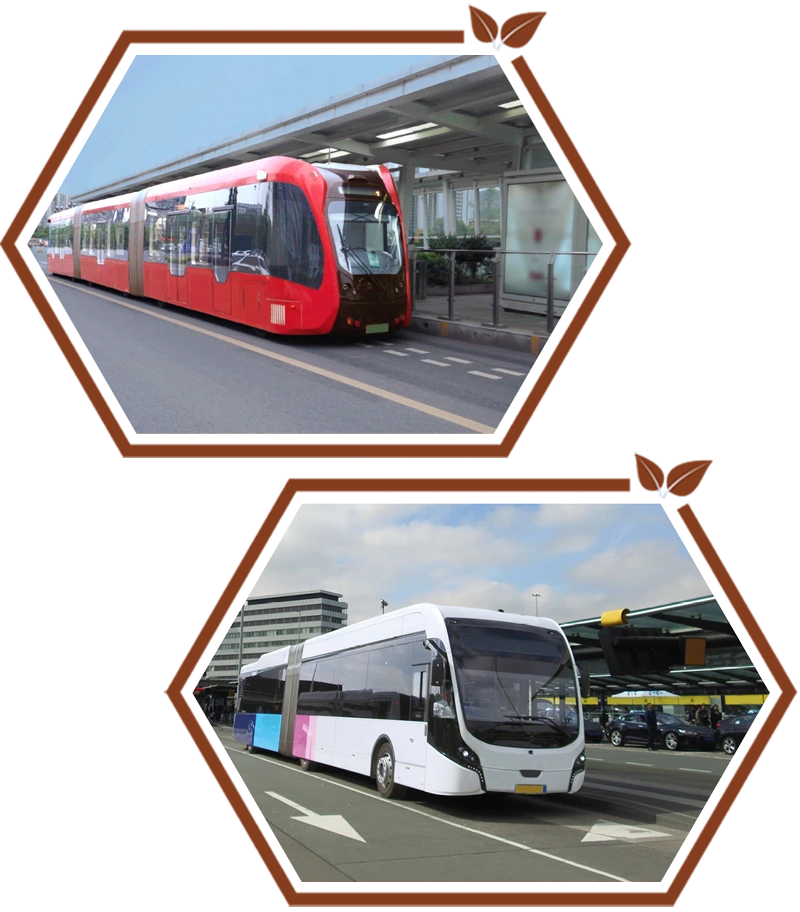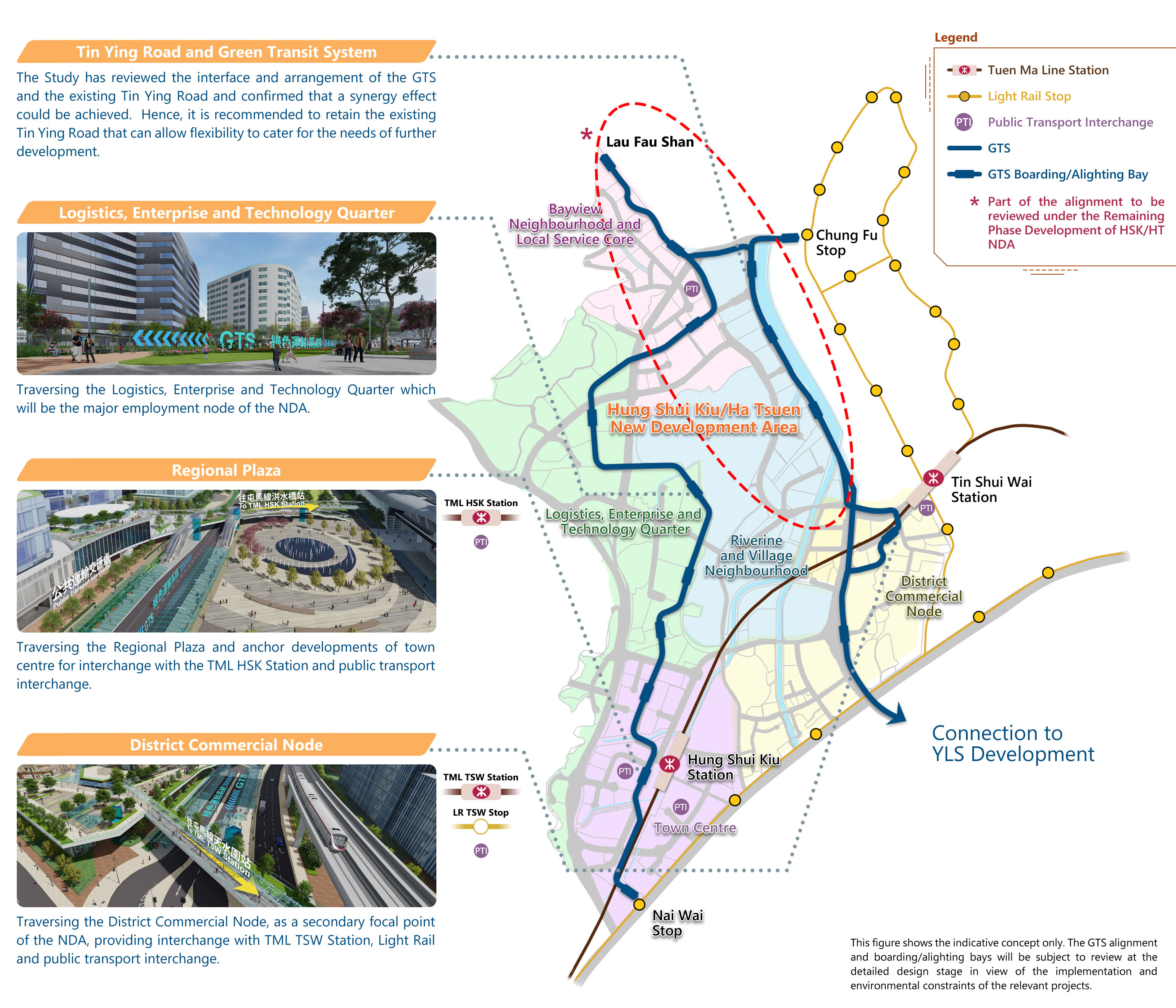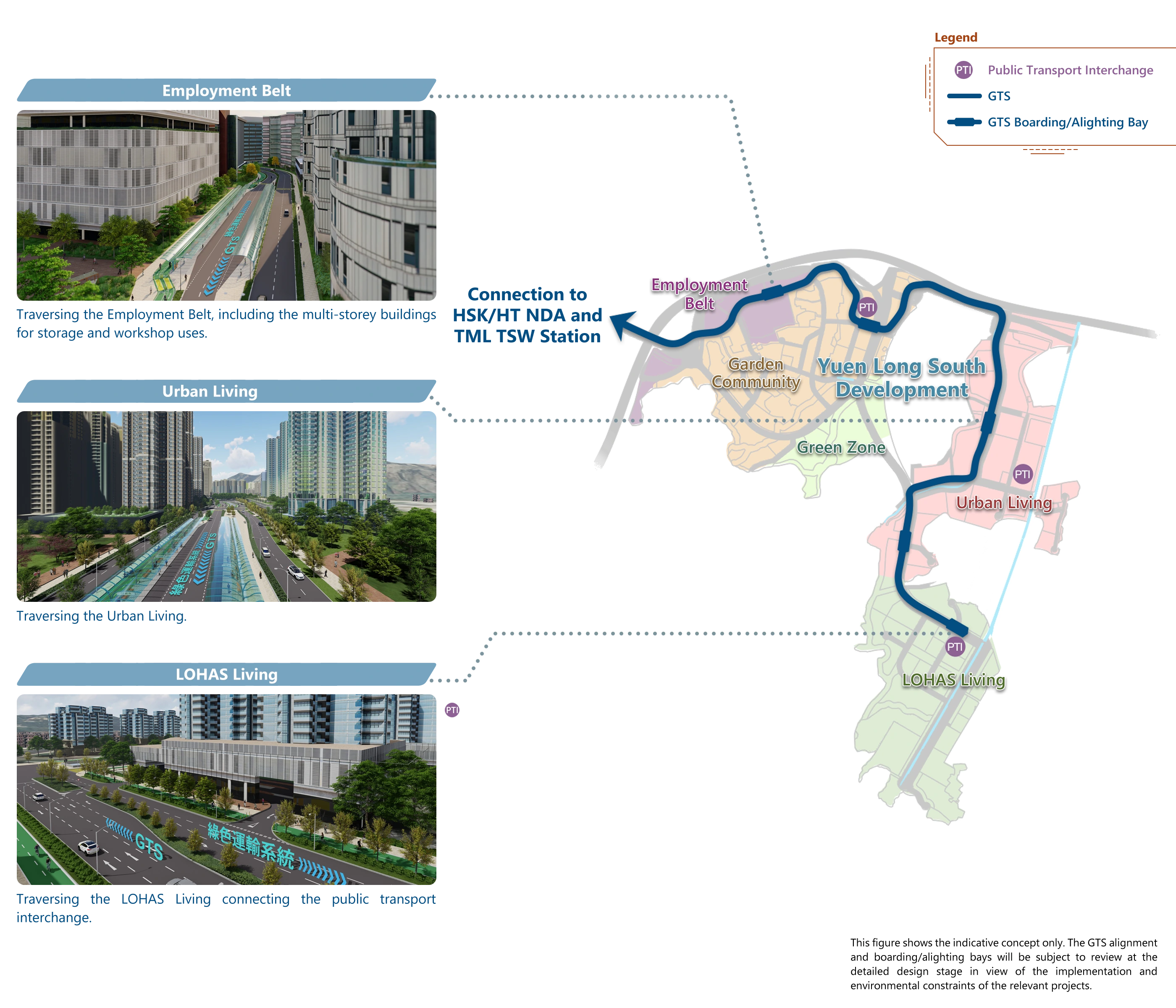GTS will traverse the HSK/HT NDA and YLS Development, and connect with the Tuen Ma Line (TML) Hung Shui Kiu (HSK) Station and Tin Shui Wai (TSW) Station, the Light Rail (LR) Nai Wai Stop and Chung Fu Stop, as well as the proposed and existing public transport interchanges. Bicycle parking spaces will be provided near the GTS stations to facilitate green interchange.
Study Findings and Recommendations
Recommended Mode

-
Routing Flexibility
Compared to the green rail-based mode, the green road-based mode has a higher flexibility to adjust routing and service frequencies to tie in with the phased development of the NDA and to cater for the actual transport demand in different periods.
-
Station Accessibility
The stations of green road-based mode are mainly at-grade. Compared to the elevated green rail-based mode (i.e. automated people mover), they are more accessible.
-
Visual Impact
Compared to the elevated green rail-based mode (i.e. automated people mover), the green road-based mode has a lower visual impact and can be better integrated with the environment of the NDA.
-
Overall Journey Time
The overall journey time of the green road-based mode and green rail-based mode are comparable.#
-
Capital Cost
The green road-based mode has a lower capital cost than the green rail-based mode.
# Taken into account the passenger walking time to and from the at-grade walkway and station platform if elevated green rail-based mode is adopted, and the time taken to pass through the non-major road junctions if green road-based mode is adopted.

Recommended Mode


* Without physical rail track
Recommended Alignment














